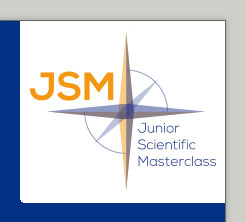Onderzoeksproject aanpassen
Projecten zijn uitsluitend aan te passen door bij het project behorende onderzoekers.
Geef via het uitrolmenu aan welke onderzoeker u bent. Nadat op u de button 'Edit project' heeft geklikt, wordt automatisch een e-mail verstuurd naar het e-mailadres van de onderzoeker die u heeft gespecificeerd.
In deze e-mail staat een link waarmee u het project kunt wijzigen.
Project properties
| Title | Real-world outcome of Transjugular Intrahepatic Portosystemic Shunt for Portal Hypertension |
|---|---|
| Keywords | liver disease portal hypertension TIPS |
| Researchers |
R.P.H. Bokkers F. Cuperus A. van der Meer |
| Nature of the research | Retrospective multi-center cohort study |
| Fields of study | gastroenterology radiology |
| Background / introduction |
|---|
| Chronic liver disease can lead to liver cirrhosis, which restricts the blood flow to the liver through the portal vein. The increased pressure in the portal vein results in portal hypertension that can lead to accumulation of fluid in the peritoneal cavity (ascites) and bleeding from varices in the esophagus and stomach. Both ascites and variceal bleeding are associated with significant mortality and morbidity in patients with liver disease. TIPS (Transjugular Intrahepatic Portosystemic Shunt) stent placement is a minimally invasive procedure that creates a shunt between the portal vein and the systemic circulation. This shunt decompresses the portal system by allowing part of the portal blood flow to bypass the liver. TIPS placement is an effective treatment for refractory ascites and variceal bleeding, but is associated with hepatic encephalopathy, cardiac decompensation, bleeding, infection, and liver failure. TIPS failure can also occur, which requires reintervention by the interventional radiologist. The efficacy of TIPSS treatment has been evaluated in trials with strict inclusion and exclusion criteria. These well-defined study populations, however, may not be representative of patient populations encountered in clinical practice. The University Medical Center Groningen and the Erasmus Medical Center in Rotterdam are the largest tertiary referral centers for patients with end stage liver disease and both are expert centers for TIPS placement. In this retrospective cohort study we aim to provide real world-data on safety, efficacy, outcome, and re-intervention in patients who received a TIPS between 2000 and 2020 in one of these centers. We also aim to identify baseline parameters that can be used to predict outcome after TIPS placement in a clinically representative cohort. |
| Research question / problem definition |
|---|
| Our retrospective cohort study aims to provide real world-data on safety, efficacy, outcome, and re-intervention after TIPS placement in patients with chronic liver disease and portal hypertension. In addition we aim to identify baseline parameters that can predict the outcome after TIPS in a clinically representative cohort. |
| Workplan |
|---|
| Two dedicated investigators (medical students) will collect clinical data of patients who received a TIPS in the University Medical Center Groningen or in the Erasmus Medical Center in Rotterdam. The student in the University Medical Center Groningen will be actively involved in data collection under supervision of a gastroenterologist, an interventional radiologist and a PhD student. The contributions of the student can lead to co-authorship in one or more publications and, potentially, to a MD/PhD project. |
| References |
|---|
|
1. Tripathi, D. et al. Transjugular intrahepatic portosystemic stent-shunt in the management of portal hypertension. Gut 69, 1173–1192 (2020) 2. EASL Clinical Practice Guidelines for the management of patients with decompensated cirrhosis. J Hepatol 69, (2018). 3. Salerno, F. et al. Randomized controlled study of TIPS versus paracentesis plus albumin in cirrhosis with severe ascites. Hepatology 40, 629–635 (2004). |


